This is the second in my series about some of the textiles from the Topkapı Palace. Today I’ll be showing you some embroidered women’s garments. These were clothing of women in the Sultans’ families.
Some housekeeping first
Many of us are new to Substack, which is the platform I am now blogging on. Near the top of the emails sent to you, you will see the following.
By clicking on the heart, you’ll “like” the post.
By clicking on the speech balloon, you’ll be taken to the online version of the post, where you can comment and also see the other comments.
By clicking on the icon with the upward arrow, you’ll be able to share the post with others via email, Facebook, a copied link, or various other options.
By clicking on the circular arrows icon, you’ll be able to “restack” the post, which means sharing it on the Substack platform.
If you’d like to read the post in the Substack app, click on the Read in App button.
All these are ways you can interact with the post, like many of you used to with my posts on social media. I’d still love to hear from you including your thoughts and whether my posts are interesting or inspiring to you. Thanks!
Silk, spangles, silver and shading
I apologise for the image quality. These photos are only happy snaps taken in low light.
The first example is a robe owned by Fatma Sultan, daughter of Sultan Mustafa. She was born in 1770.
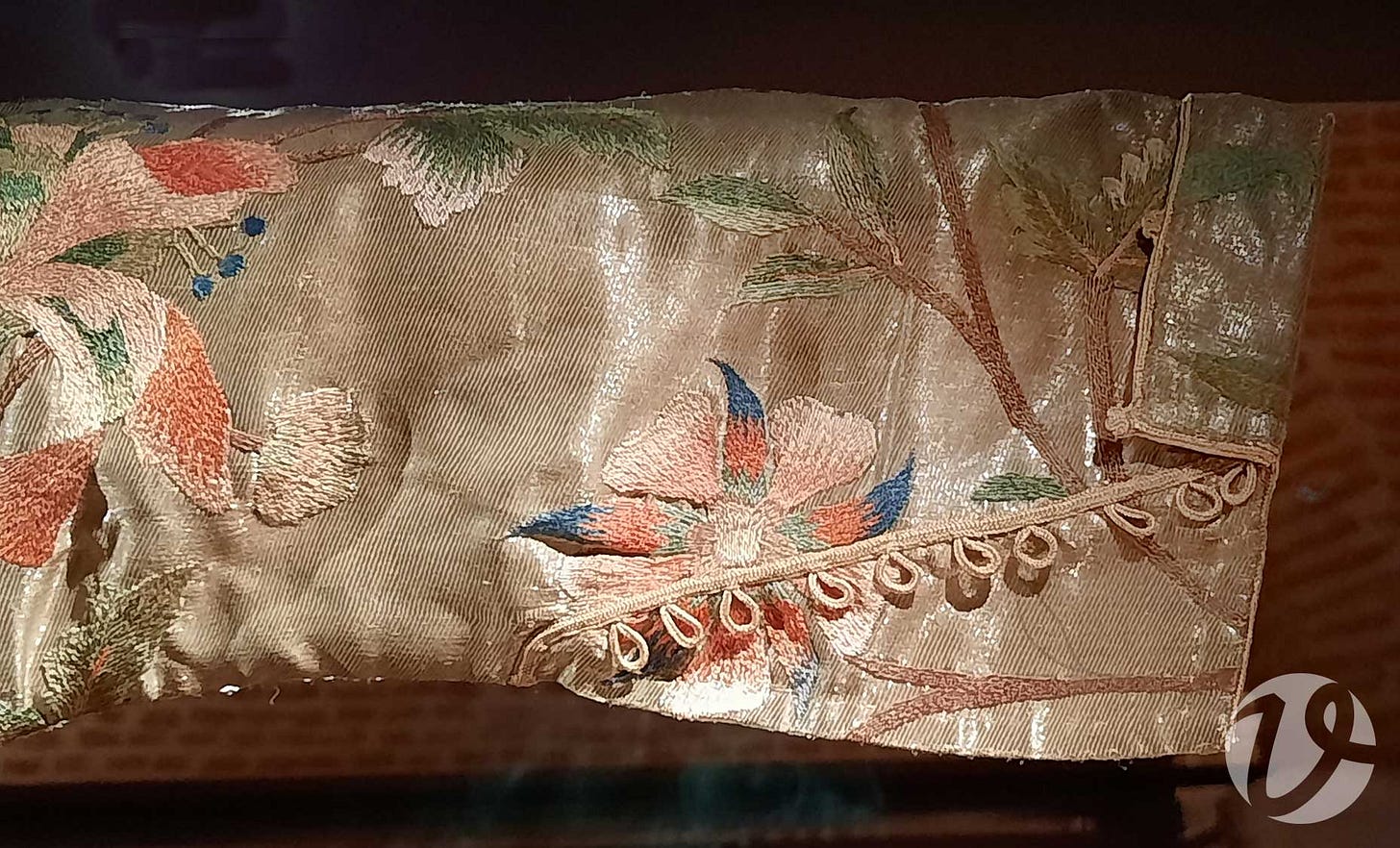
The second example is an Ottoman robe from the late 18th century or early 19th century.
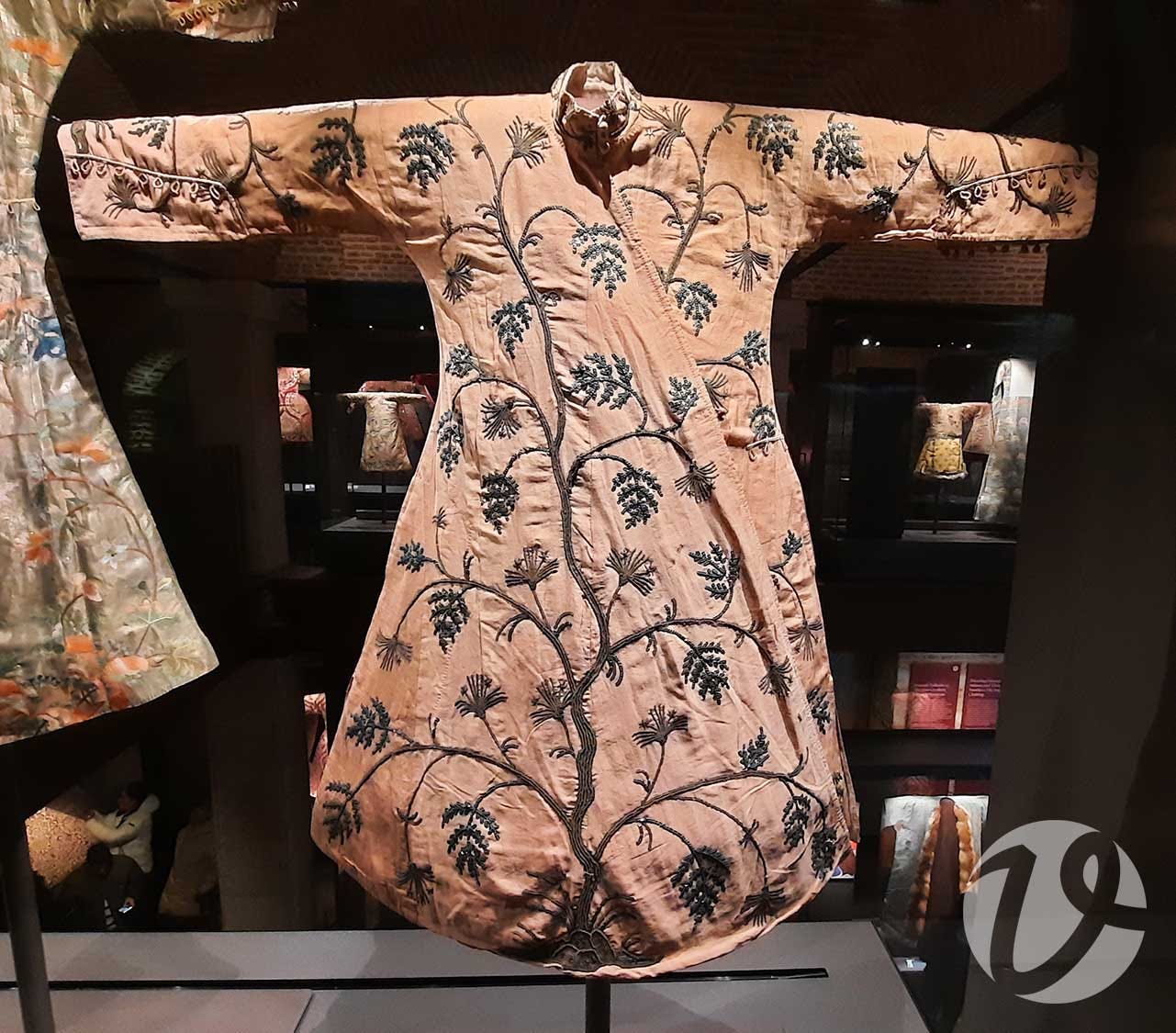
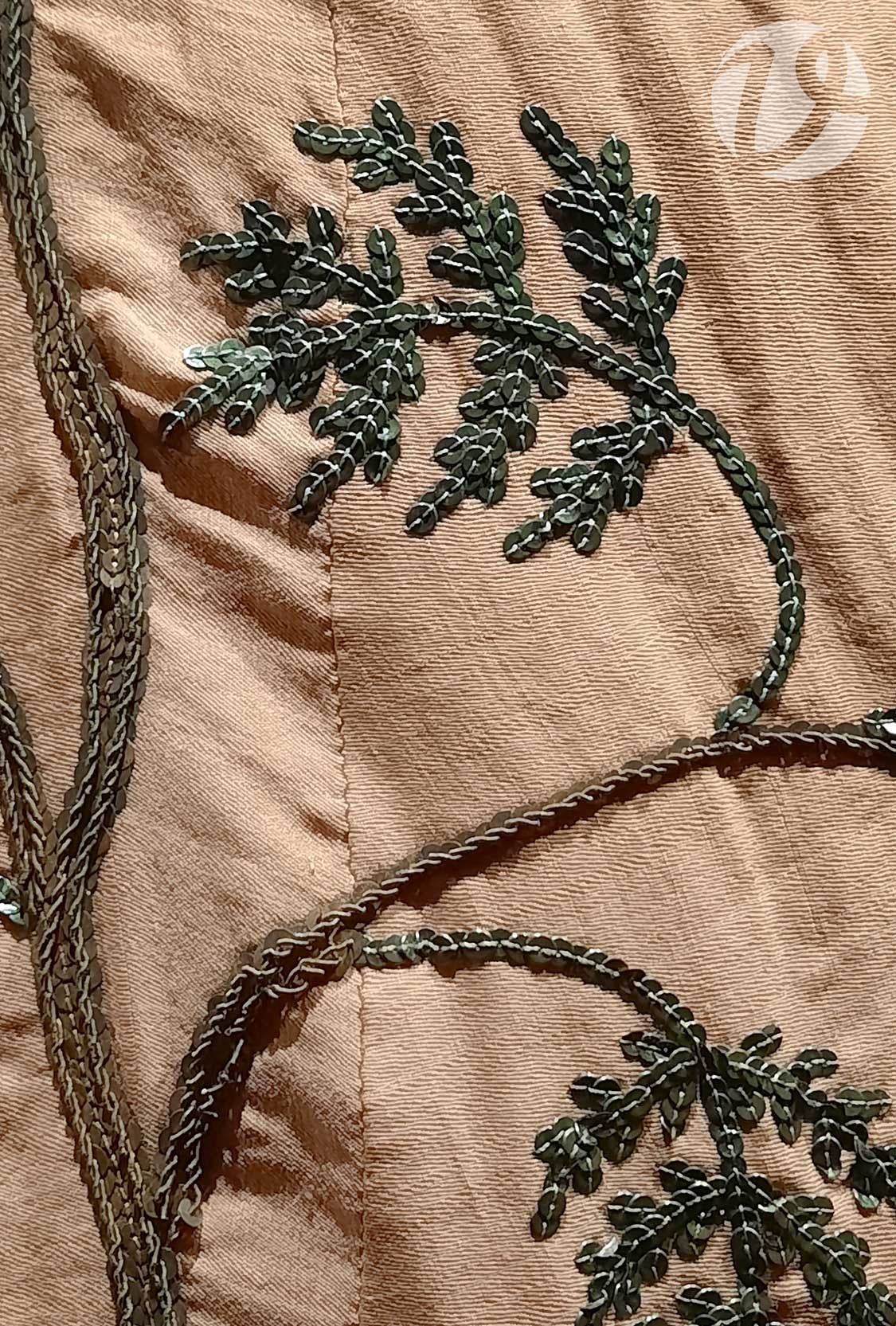
The third example is a robe which belonged to Saliha Sultan’a, the daughter of Sultan Abdulhamid I. The robe dates from the late 18th century.
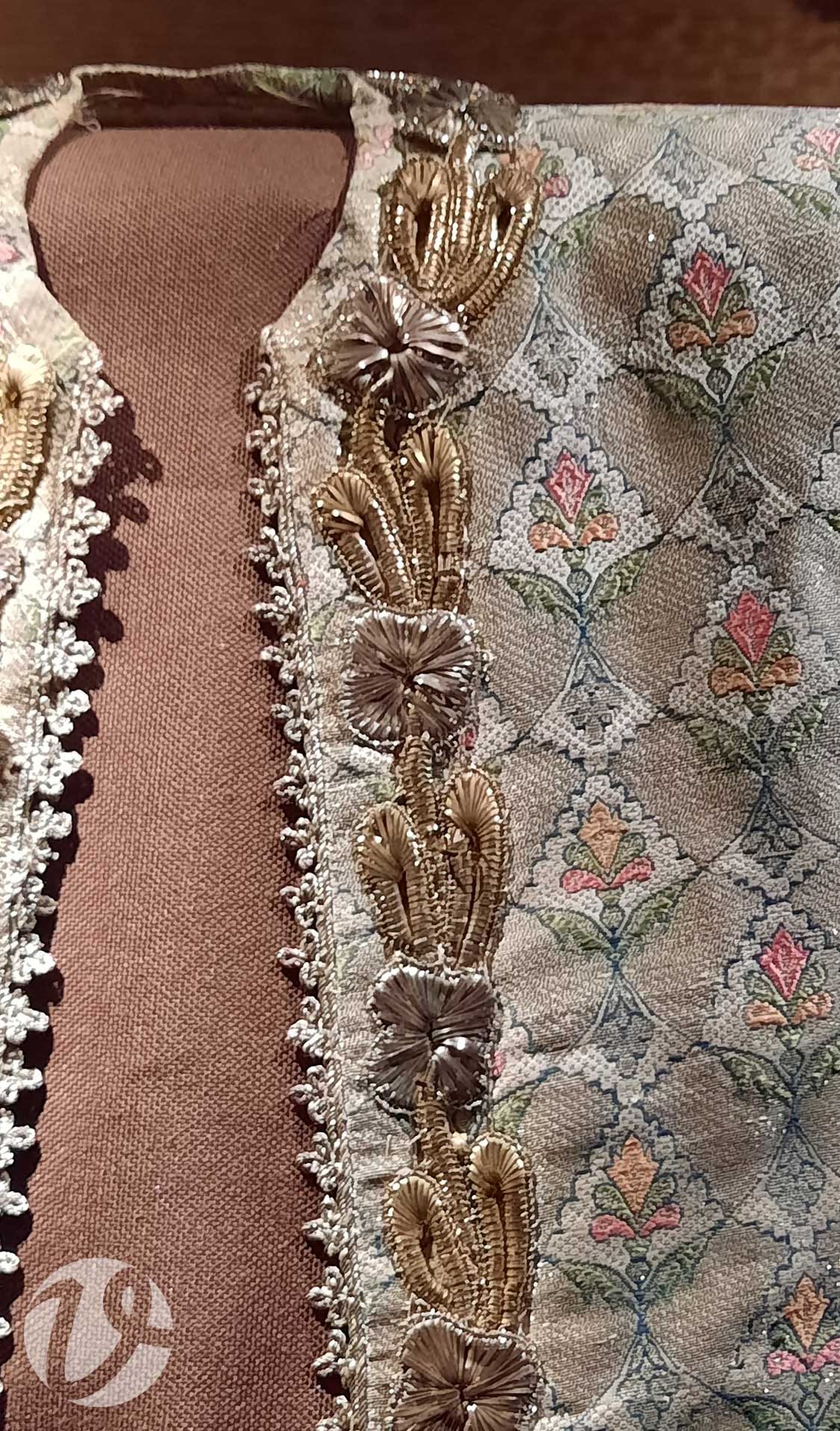
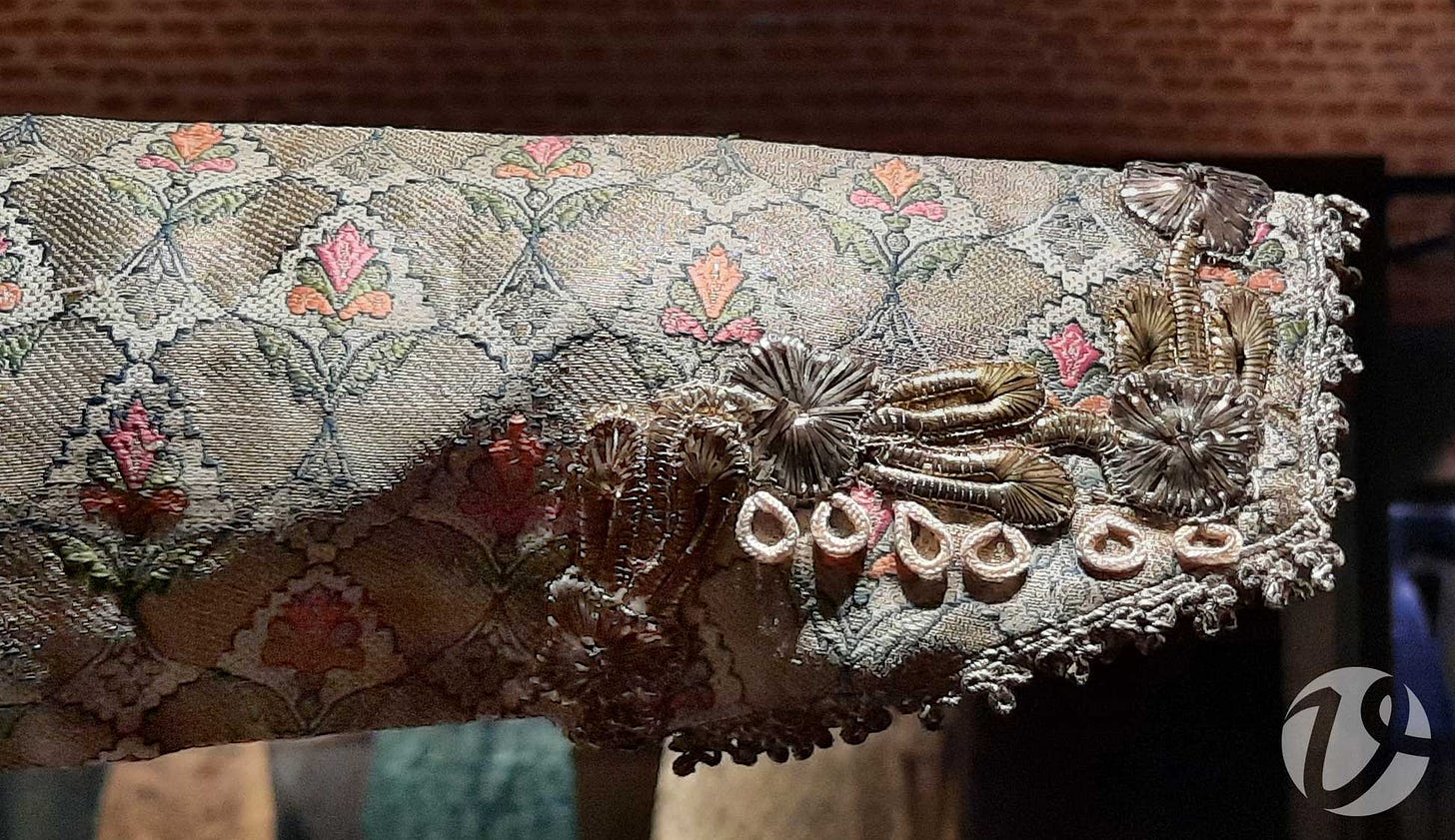
The final example is another robe, also belonging to Saliha Sultan’a, the daughter of Sultan Abdulhamid I. She died in 1786.
I still have more to share with you from the Topkapı Palace, so stay tuned.
The book I mentioned is “Ottoman Embroidery” by Marianne Ellis and Jennifer Wearden. V&A Publications, 2001. ISBN: 1851773479. The examples featured in the book are all from the collection of the V&A.
The book is available second hand (at great expense!) but I’d check libraries first to see if your local collection has it, or if you can obtain it through an interlibrary loan.
















I look forward to seeing how these might influence or be incorporated into your future designs.
Thank you for sharing and those robes are fabulous. Love the embroidery and goldwork but the buttons have won my heart. Are they hand sewn as well? I ask this as I was on a course in Australia and I was shown how to make buttons and these look similar.